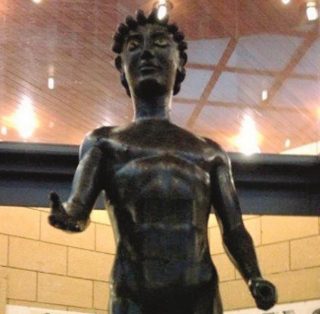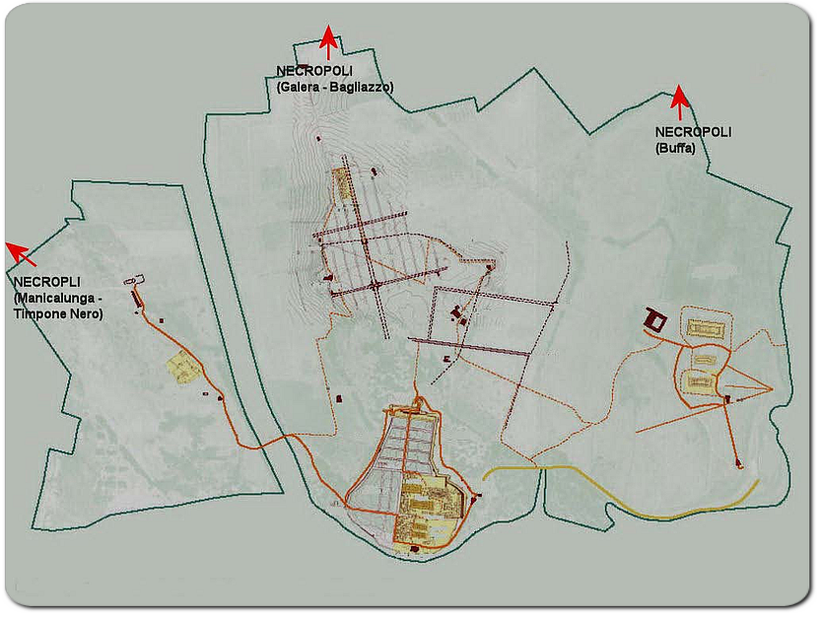A campaign to explore the biggest necropolis of Selinunte
Only in the most recent times it has been possible to study the necropolis. Actually excavations in the necropolis are important because they allow to bring to light thousands of objects. They are especially vases and terracotta figurines, which were used to protect and accompany the deads in their journey to the afterlife.
“Baglio Calcara” in Triscina district, west to Modione river, is home to the “Archaeological Museum Campus”. Eventually, in 2012 it was able to undertake a campaign of archaeological excavations in the areas of its property, to explore one of the Selinunte necropolis, the largest.
In fact, in the area called Manicalunga, on the hill Timpone Nero, just west of the extra-urban sanctuaries of Gaggera, lies one of the largest and most important necropolis of Selinunte, which dates back to the period of its greatest power.
Actually, the distance of the necropolis from the city still makes it doubt whether it belonged to Selinunte or to any other nearby settlement, maybe a city which still remains unknown.
It is really big, as it covers about 2-3 km. And it is rich, full of thousands and thousands of tombs which belong to the VI – V century BC.
The tombs are of various types: slabs, sarcophagus and bare earth and are arranged in a chaotic way, because they are flanked or overlapped in layers, due to the limited space granted at that time for burials.
Surely inhabitants practiced both the rite of inhumation and the one of the incineration in pithoi or amphorae, of different types and sizes.
a brief History of Timpone Nero Necropolis
The archaeologist Cavallari discovered the necropolis in 1871. After the Second World War, Jole Bovio Marconi investigated it again, discovering some small cave tombs, partially destroyed by excavation of the tombs of the Greek age. The tombs had very old outfits, referring to the facies of Naro-Partanna and to the Beaker culture (about 2600 – 1900 BC)
Subsequently, in the 1960s, Vincenzo Tusa resumed regular excavations to stem the activity of poachers who had already looted a considerable number of tombs.
Mosko
In January 2013, during the excavations inside the Necropolis, archaeologists found the perfectly preserved skeleton of a young individual. He had a cup of fine black-painted clay near the right hand engraved with the word Mosko.
It is likely this was his name, engraved by his parents on the bottom of the cup that was supposed to quench his thirst during his long journey to eternity.
Subsequently, laboratory tests established that the skeleton belonged to a male, about twelve-fifteen years of age. Likely he died of natural causes and lived in the last years of the fifth century BC.
Other necropolis
There are more three necropolis in Selinunte, all located outside the city, apart Manuzza necropolis.
Manuzza Necropolis
Probably it is the oldest one. In fact it dates back to the first colonial settlements (half of the VIII century BC). It is a small incineration necropolis, built on the south-eastern slopes of the Manuzza hill.
Buffa Necropolis
The second necropolis is located north of the temples of the eastern hill, in Buffa district.
It probably dates back to the late seventh and sixth centuries BC. Sadly it has always been considered the poorest necropolis of Selinunte but at its entrance there is a large triangular shaped “votive grave”.
Inside it, archaeologists have found many figured votive terracottas and vases containing remains of animal bones, perhaps results of sacrifices. From the abundance of the remains, it was certainly a place for offers to the gods.
Galera-Bagliazzo Necropolis
The last necropolis lied at the north-east of the Manuzza hill, in the Galera-Bagliazzo district.
In the sixteenth century Tommaso Fazello discovered it. Its tombs dates back to the VII-VI century BC. A wide road connected this necropolis to the Manuzza discrict.
Fictile sarcophagi and various funerary objects displayed in the Archaelogical museum in Palermo come from this necropoli. Among them, some subgeometric and linear vessels are of great artistic value.
 And in 1882, the “Efebo of Selinunte“, a beautiful bronze statue of a young man, was discovered in the necropolis Galera Bagliazzo as well.
And in 1882, the “Efebo of Selinunte“, a beautiful bronze statue of a young man, was discovered in the necropolis Galera Bagliazzo as well.
There is also a singular funeral accessory you can see in the Archaelogical Museum “A. Salinas” in Palermo. It consists of some little rings and five large shell shaped pendants. Both the rings and the pendants recall the Egyptian style.
This along with other findings has led to think there were small Egyptian communities in Selinunte, which maintained commercial relations with the mother country.
Funeral rites
The many excavations over the years prove the existance of two different funeral rites practiced in Selinunte. One was inhumation, with the placement of the dead in a tomb dug in the tuff. The other was cremation, with the gathering of cremated body in a special cinerary urn.
In both the rites funeral accessories accompanied the remains of the deceased. The equipment consisted of various objects. Oil lamps, lékythoi, statuettes of protective deities, as they thought the dead would need them in the afterlife. Alongside numerous local products there were several imported products. Some of them were proto Corinthian and Corinthian vases, richly decorated and Attic pottery, with black or red figures. Many of these finds came from Manicalunga necropolis.
